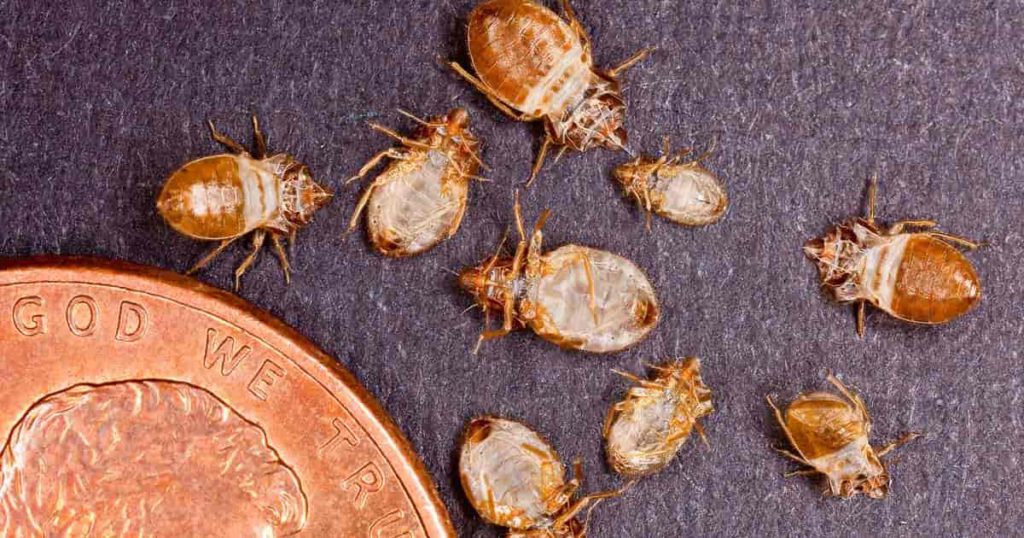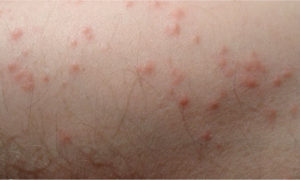THE TRUTH ABOUT BED BUGS
“Bed bugs are back. I don’t know if you are aware that since 2000, bed bug infestations have risen 81 percent, according to The National Pest Management Association. This resurgence has consumers nationwide on high alert, seeking information on the pests and how they can protect themselves.”
Bed bugs and their habits are actually very simple to understand. For the unassuming public, though, differentiating between fact and fiction is becoming ever so difficult with the amount of information available.
Understanding the basics is the first line of defense a consumer has against the unwelcomed critters, which can take a toll both financially and emotionally on a person with an infestation.
Confirmed Facts
- Bed Bugs Can Be Found On Bedside Alarm Clocks
- True: Bed bugs have been known to fester in alarm clocks and other appliances and within dark crevices like coffee makers. But, they like to stay fairly close to their host. So if you have your coffee maker in your bedroom, then they can definitely be in there.
- Bed Bugs Like To Hitch Rides
- True: Bed bugs can very easily be transferred in suitcases and on clothing, putting travelers at extra-high risk; Bedbugs do have primitive wings, but they cannot fly.
- Some People Are Not Affected By Bed Bug Bites
- True: Some people do not have a physical reaction to bed bug bites and may be unaware that bed bugs are in their home until they actually see them, but everyone is at risk for having infestations as bed bugs do not discriminate based on socio-economic class.
- Bed Bugs Can Live For Many Months Without Feeding
- True: Bed bugs can live for many months without feeding. In fact, they have been known to live up to 14 months. That is why it is imperative to encase mattresses, box springs, and pillows with bed bug proof protectors. Bedding encasements effectively trap bugs that are in and on your mattress and box spring and cut them off from their food source indefinitely.
- Insect Foggers Provide Very Little Control Of Bed Bugs And May Even Cause The Bed Bug Population To Disperse, Making Control More Difficult
- True: Insect foggers do not effectively control bed bugs. Most insect foggers contain a flammable propellant and some have been associated with accidental fires. The best way to control bed bug problems is to contact a pest professional, who will help with vacuuming, and steaming, laundering belongings, sealing areas and gaps where bed bugs can hide and encasing mattresses, box springs, and pillows with bed bug proof protectors.
- Bed Bugs Reproduce At Alarming Rates
- True: Depending on conditions, bed bugs can produce three or four generations in one year; a female can produce one to five eggs a day, which is as big as a pinhead and can hardly be seen.
Bed Bug Myths Debunked
- Bed Bugs Spread Deadly Diseases
- Wrong: Bed bugs do not transmit disease. Bed bug bites, however, can cause allergic reaction in some people similar to a mosquito bite. Frequent scratching of the bite marks or picking the scabs can cause infections. And people with severe and/or repeated infestations can feel anxious, worried or ashamed.
- Chemicals/Pesticides Will Kill All Bed Bug Stages.
- Wrong: It is difficult to kill all bed bugs with only a pesticide application. Successful treatment depends on an Integrated Pest Management approach to bed bug control which involves, vacuuming, and steaming, laundering belongings, sealing areas and gaps where bed bugs can hide, homeowner, tenant, manager education and encasing mattresses, box springs, and pillows with bed bug proof protectors.
- I Can Get Rid Of Bed Bugs By Leaving My House Empty For A Few Weeks.
- Wrong: Adult bed bugs can live as long as 14 months without a meal, so a long vacation won’t provide you with relief. The only way to deal with the problem is to treat it directly and monitor results over the long haul.
- Bed Bugs Feed Off Of Dirt And Other Grime
- Wrong: Bed bugs feed on the blood of human beings and other animals such as dogs, cats, birds, gerbils, hamsters, guinea pigs and mice. But, their preferred choice is you and I.
- Bed Bugs Are Mostly Found In Beds OR Found In Shelters; Only Poor People Or Dirty People Get Them.
- Wrong: They’re found close to where they feed. Typically they’re found in a bed mattress, box spring, bed frames and around the bed. They’re also found in electric outlets, switches and behind pictures. Bed bugs can be found in hotels, motels, dormitories, apartments, condos, private homes, and even in public places, such as retail stores, movie theaters, businesses and offices. Anyone can get bed bugs. It has nothing to do with how clean you keep your home.
- Bed Bugs Are Too Small To See With The Naked Eye
- Wrong: The adult is about the size of an apple seed. The eggs and baby or nymph is about 1 mm long, almost entirely white and difficult to see with the naked eye. The nymph turns red as it feeds and fills with blood, making them easier to see.
- Bed Bugs Come Out Only At Night
- Wrong: It’s true that they are more active at night and in the early morning, but bed bugs sense the heat and carbon dioxide given off by humans and therefore may come out at any time of day.
- Bed Bug Bites Are Easily Felt
- Wrong: You do not feel a bed bug biting because they inject their saliva first which contains an anesthetic, numbing chemical and an anti-clotting agent so your blood flows freely.
- Walking Into A Room That Has Bed Bugs Means You Will Get Bed Bugs
- Wrong: They spend 90% of their time hiding and are usually active at night. Bed bugs avoid light and do not like to be disturbed. So you will not necessarily walk away with bed bugs just by being in a room that has them.
- If You Have Bed Bugs You Need To Throw Away Infested Clothing And Furniture
- Wrong: Clothing can be laundered to get rid of bed bugs. In most cases furniture can be treated and should only be discarded if there are no acceptable treatments that can rid them of bed bugs.
- It’s Too Cold Where I Live For Bed Bugs!
- Wrong: Even in the coldest climates bed bugs can still thrive. For starters, most bed bug infestations are located indoors. Bed bugs only need to be transported for short periods of time on clothing or luggage to find a new home to infest.
- Sleeping In A metal Bed Will Protect You From Bed Bugs
- Wrong: Having a metal bed will not protect you from bed bugs. In some scenarios, a metal bed may actually make it harder to detect a bed bug infestation because the hollow tubing of a metal bed is a great place for bed bugs to hide. The best way to prevent and control bed bug problems in beds is to encase mattresses, box springs, and pillows with bed bug proof protectors.
- You Can’t Get Bed Bugs From Your Neighbor
- Wrong: Bed bug migration from one home or apartment to another is actually more common than most people think. In apartments or shared housing such as condos, the risk of migration is even higher. Bed bugs can travel through tiny cracks in the wall, through connected vents or spaces, or in the seams of floorboards or the edges of carpet. They have even been shown to travel out a front door, down the hall and into a neighboring apartment.
- Bed Bug Bites All Look The Same
- Wrong: They can be small and red or bigger like welts. Some people don’t react at all to a bed bug bite. It is almost impossible to diagnose a bed bug problem solely on the presence of bites on a human host.







